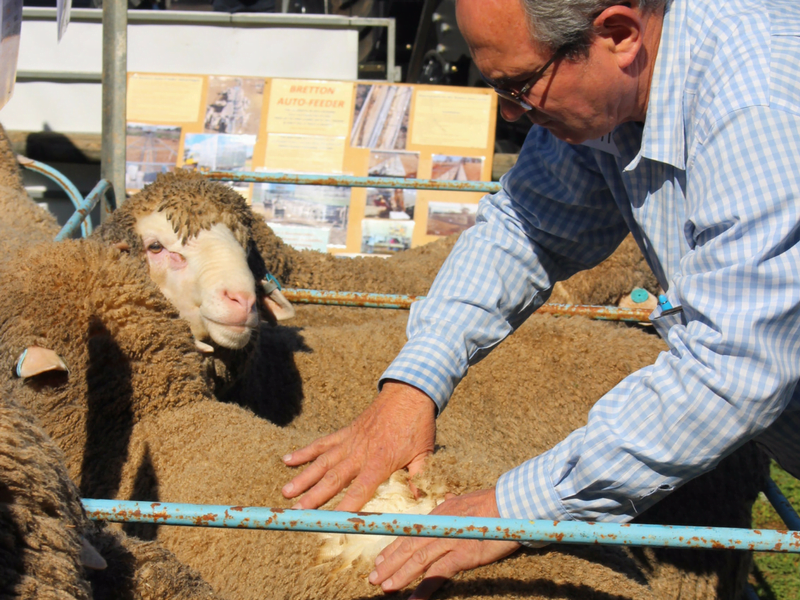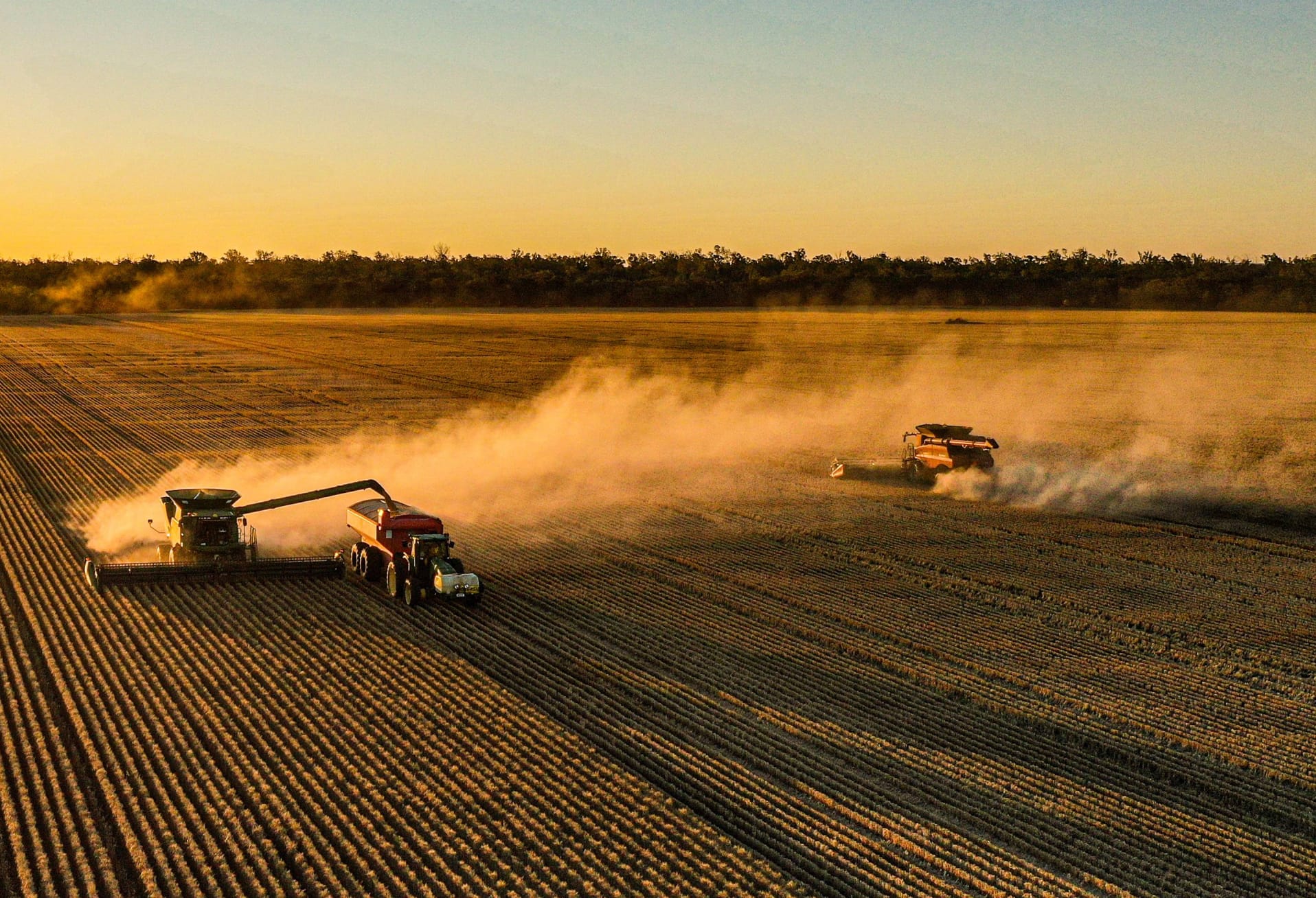When crops are cut for hay, knowing how to capture and preserve the best feed quality that meets the needs of its destined market, whether for export, or domestic dairies, feedlots or farm use, will give the best market access and be most profitable.
After experiencing dry conditions and frost events, lower grain yield potential or poor pod set means many growers are making the decision which way to take the crop, and cutting and baling is underway, sometimes for less-typical cereals, vetch and other legumes, and canola crops.
Comparing the profitability of standing crop vs hay vs grain
Decide early whether to leave the crop standing, cut for hay or harvest grain, by assessing the
- Crop growth stage and Biomass available for hay, and
- Estimate damage by frost and the effect on potential yield.
These guides are useful to identify frost in cereals and canola and pulses.
Then, weigh up the economics using tools like the Salvaging crops calculator or Hay vs grain calculator.
Other decision factors will include current soil moisture, forecast rain, weed pressure, last year’s residual straw height, whether chemical withholding periods have expired, and having access to equipment or contractors in timely fashion.
Have a marketing strategy before cutting your crop
Develop your grower-buyer relationship by talking to brokers and direct-buyers and explore the market options. Know who will, or is likely, to buy it and what quality you need to achieve.
Decide on what you can supply, determine the price from the paddock or from storage, how you will do business, and what the payment terms are to avoid situations of mistrust.
This year there will be less oaten hay from Victoria and South Australia, but more from New South Wales, as well as more cereal hay from frosted crops across the three states. Victoria’s south-west is still a good market for cereal hay, while northern Victoria has water and more options. Consider what you have left from last year; its quality and condition.
Dairy growers are being told not to panic due to the extra cereal hay supply, and the advice is to buy on quality and specifications; not to buy something out of the paddock they don’t know anything about.
Feed test for fodder quality
Make quality feed regardless of crop or variety and have it feed tested with a reputable company so you can provide robust, quality information to the customer. Feed can be tested through labs such as Forage Lab Australia, FeedTest or Apiam Livestock Logic, or by your export hay merchant. Accurately sample hay from several bales using a probe or core sampling device. A couple of handfuls, or a ‘flake’ from one bale, is not adequate.
Frost and drought affected crops are often higher in sugar and water-soluble carbohydrates (WSC) and make a good quality hay when they are cut at a younger, leafier stage. It can be tempting to delay cutting drought or frosted crops in an effort to accumulate more biomass, but as crops mature from vegetative to reproductive, stems thicken and quality declines (the yield vs quality challenge!). Avoid cutting beyond watery ripe stage.
If you are targeting dairy for hay or silage, there are two different requirements:
1. Milking quality feed: vetch and other legume hay, or silage that has neutral detergent fibre (NDF) <45% (most important- lower the better), crude protein (CP) >18% (higher the better), and metabolisable energy (ME) >10 MJ/kg DM is desirable.
Vetch hay is particularly high in protein and energy, which makes it ideal feed for lactating dairy cows. BCG conducted a trial in 2023 that analysed three vetch varieties; Studenica, Morava and Volga, all of which were taken to hay. Corresponding feed test analysis showed that all treatments and varieties were of acceptable quality, and that Studenica had marginally higher metabolisable energy (ME) and crude protein levels than the other two varieties. This suggests cutting time may have an effect, as Studenica hay was cut two to four weeks earlier than Volga and Morava due to being an earlier maturing variety. Additional benefits to growers is that vetch crops allow for a disease break, is a weed management tool, and fixes nitrogen for subsequent crops.
2. Dry stock requirements: cows in maintenance can usually use forage around 50% NDF, and ideally >10% CP.
While cereal hay never meets milking quality feed, 2-3 kilos of good quality cereal hay can fit in a milker ration. Failed cereal crop hay is useful if it is cut by early head emergence, so it cures properly, and has low NDF < 45%, CP >12%, and ME >10 MJ/kg DM.
Awned cereal hay is less preferred to oaten or vetch and other legume hay, but if it’s immature at the frosted/cutting stage, awns are softer and more palatable.
Frosted brassica, vetch and other legume hay can be more variable and should be tested prior to cutting to understand how conditions have affected quality, and what target market it could fit; remembering that the quality will decline further from this point compared to the later time of cutting and baling.
Different industry hay and silage standards are tabled in the Fodder for the Future Final Report, page 10.
Cure and store hay well
Ideally crops need to have their heads out of the boot to avoid hay curing times of 5–8 weeks.
Droughted crops for hay are slightly different – they have higher sugars and WSC’s and may need to be cut before full head emergence (panicles often stuck) for best hay quality. These crops benefit from being super conditioned (with higher, continuous roller pressure to crush nodes and florets) to reduce curing times and reduce the risk of haystack fires. Super conditioners can reduce curing time by 50% compared with normally conditioned hay (with mower conditioners that squash and crimp stems) but make crop more vulnerable to rain damage. A separate pass of the super conditioner after rain can speed up curing again.
Don’t rush the baling process. Make sure windrows have dried down enough to bale, down to 12-15% moisture (depending on bale size and density) to avoid bales spoiling and hayshed fires.
Store hay well, ideally in sheds to protect from weather damage as much as possible. Customers don’t like paying top dollar for spoiled tops and bottoms.
Other Resources
Tips for a profitable hay season | Feed Central
Producing quality oat hay | AEXCO
Quality hay and how to get it | Agriculture Victoria
This article is supported by the Murray Dairy – Forage Cropping Rotation project, supported by Murray Dairy and Dairy Australia (additional thanks goes to Scott Rathbone, CRC Agrisolutions), as well as the AgriFutures Oaten Hay Agronomy II project, a collaboration between SARDI, BCG and Hart Field site.
This article and corresponding vetch research was funded by the GRDC as part of the ‘NGN- Vetch agronomy for the lower Vic Mallee’ project (BWD2304-001SAX).













